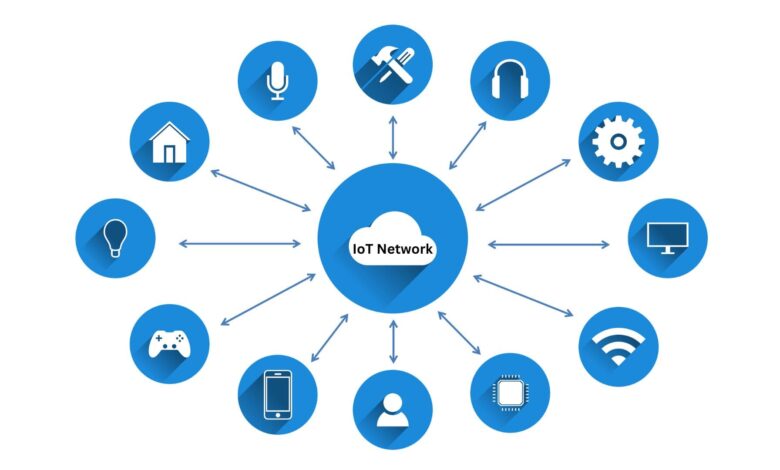How to Check Data on Devices Connected Through an IoT Network

The Internet of Things (IoT) has transformed the way we live and work by connecting everyday devices and objects to the Internet. From smart homes to industrial automation, IoT adoption continues to grow rapidly. However, with the proliferation of interconnected IoT devices comes the need for effective data monitoring and management.
Checking and analyzing data from IoT devices is essential to optimize performance, enhance security, identify issues proactively, and unlock valuable insights from the data. This article will explore various methods and best practices for checking data on devices connected through an IoT network.
What is the Internet of Things (IoT)?
The Internet of Things refers to the network of physical objects embedded with sensors, software, electronics, and connectivity that allows them to connect, collect and exchange data over the Internet. These “smart” IoT-enabled devices communicate and interact with each other as well as with other systems to automate tasks and processes.
IoT devices include a vast range of products such as home appliances, wearables, medical equipment, vehicles, industrial machines and more. By 2025, analysts predict there will be over 30 billion IoT-connected devices worldwide.

Why is Data Monitoring Important for IoT?
As IoT adoption expands, the amount of data generated by IoT devices is growing exponentially. Therefore, proper data monitoring and management are crucial for:
- Security – Detecting and preventing data breaches, and cyber attacks.
- Performance Optimization – Identifying issues proactively to improve efficiency.
- Informed Decision Making – Analyzing data to gain meaningful insights.
- Compliance – Adhering to data protection laws and regulations.
- Enhanced Customer Experiences – Personalizing services based on usage patterns.
Methods to Check Data From IoT Devices
There are various methods and tools available to monitor, analyze and manage data from IoT devices connected through a network.
1. Device Management Platforms
Device Management Platforms (DMP) provide a centralized console to remotely monitor, control and manage all IoT devices in a network. Popular DMPs include:
- AWS IoT Core
- Microsoft Azure IoT Hub
- Google Cloud IoT Core
With a DMP, admins can check real-time device data, set alerts, automate tasks, troubleshoot issues and push firmware updates remotely.
2. Network Monitoring Tools
Network monitoring tools like Nagios, PRTG Network Monitor, and Zabbix provide deep visibility into network traffic and bandwidth utilization. This allows analyzing data flows to identify any anomalies, bottlenecks or connectivity issues.
3. Data Analytics & Visualization
Data analytics techniques help derive actionable insights from IoT data. Visualization tools like Grafana transforms complex IoT data into interactive dashboards, graphs and charts, providing a unified view for easy interpretation.
4. Packet Inspection
Network packet inspection techniques like packet sniffing allow collection and analysis of data packets exchanged between IoT devices. This helps understand communication protocols and data flows.
5. APIs & Protocols
Many IoT platforms provide APIs to retrieve, monitor, analyze and manage device data programmatically. Standard IoT protocols like MQTT, and AMQP enable reliable messaging and seamless data exchange between devices and applications.
6. Edge Computing
Edge computing allows real-time data processing on edge devices instead of sending all data to the cloud. This reduces latency while enabling quicker data analysis and decision-making closer to the source.
Best Practices for Checking IoT Data
To effectively check and monitor IoT device data, organizations should follow these best practices:
- Implement robust security – Encrypt data, enable VPNs, and use firewalls to prevent unauthorized access.
- Perform regular audits – Continuously monitor devices and network traffic to identify any anomalies.
- Update firmware/software – Ensure devices run the latest firmware versions to patch vulnerabilities.
- Enable remote troubleshooting – Use device management platforms to diagnose issues remotely.
- Set data usage thresholds – Get alerts for abnormal bandwidth usage or data spikes.
- Use analytics tools – Identify trends and optimize performance using data analytics.
- Visualize key metrics – Use dashboards to gain high-level insights from IoT data.
- Limit data retention – Store only relevant data, and delete old data regularly to reduce costs.
- Ensure regulatory compliance – Follow data protection and privacy laws relevant to your industry.
- Implement access controls – Restrict access to confidential data with role-based permissions.
Frequently Asked Questions
What is the role of data monitoring in IoT?
Data monitoring is critical in IoT to optimize performance, enhance security, enable informed decision making and ensure regulatory compliance. Effective data monitoring provides actionable insights from IoT deployments.
How can I check data flows on my IoT network?
Use network monitoring tools to gain visibility into network traffic and bandwidth usage. Packet inspection techniques can also help understand communication between IoT devices.
What are some key features of IoT device management platforms?
Device management platforms allow remote monitoring, configuration, troubleshooting, alerting, and firmware updates through a centralized dashboard. This simplifies IoT data management.
How can data analytics help my IoT deployment?
Data analytics techniques like predictive modelling, machine learning and visualization can uncover trends and patterns from IoT data to optimize efficiency and decision-making.
What security measures should I implement for my IoT network?
Use encryption, VPNs, firewalls, data access controls, and regular audits to secure your IoT network and devices. Promptly install firmware updates to address vulnerabilities.
What are some best practices for IoT data monitoring?
Best practices include implementing robust security, regular audits, using analytics tools, visualizing key metrics, enabling remote diagnostics, setting data thresholds, and following compliance regulations.
Conclusion
Effective IoT data monitoring provides valuable insights while helping ensure optimal performance, robust security, and regulatory compliance. A holistic approach using solutions like device management platforms, network monitoring tools, data analytics, and visualization enables organizations to harness the full potential of IoT deployments.
Following IoT data monitoring best practices like implementing strong access controls, prompt firmware updates, remote troubleshooting capabilities, and data encryption are key to a successful IoT data management strategy. As IoT adoption accelerates, the ability to reliably and securely check data from connected devices will be critical in realizing the profound benefits of the Internet of Things.





